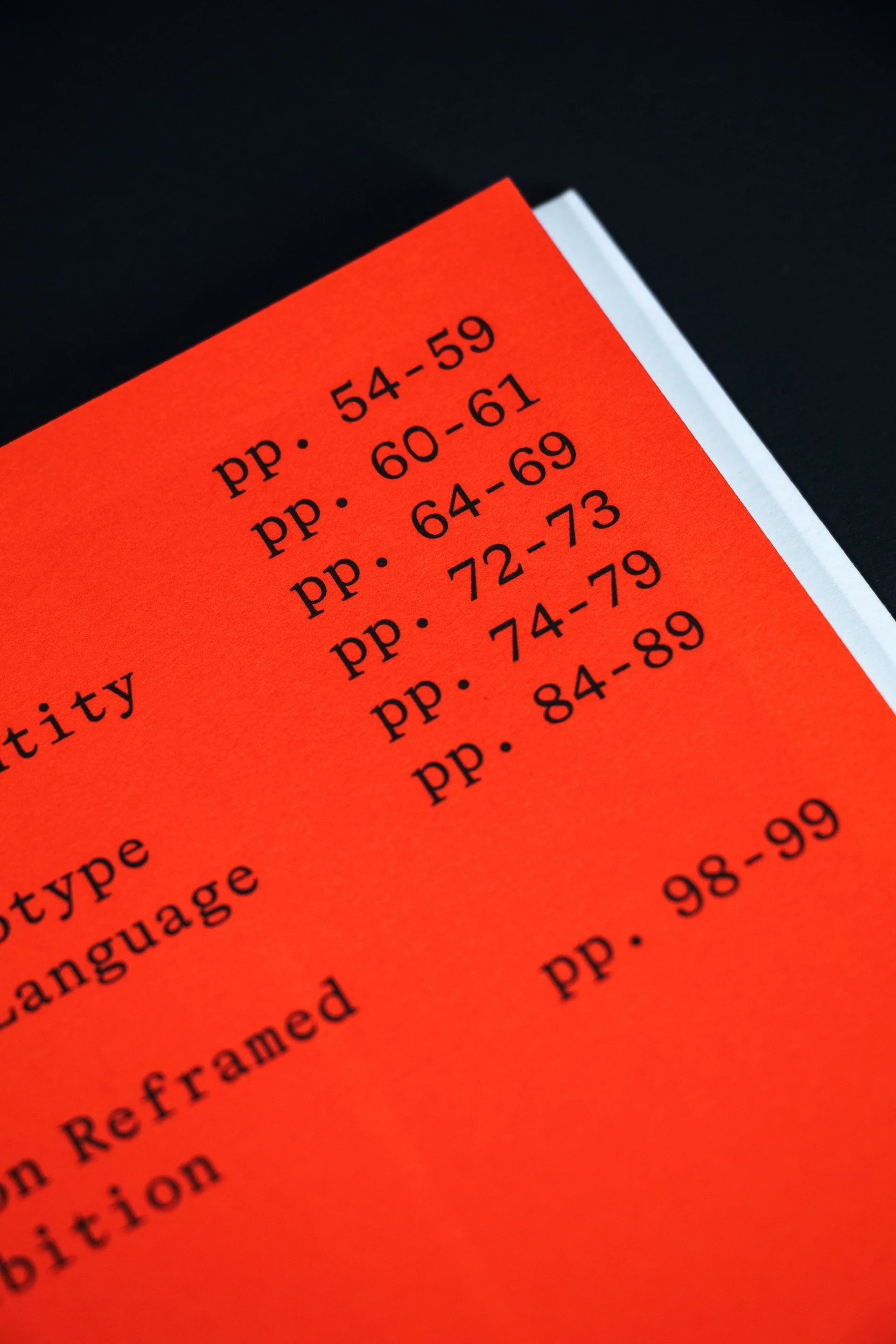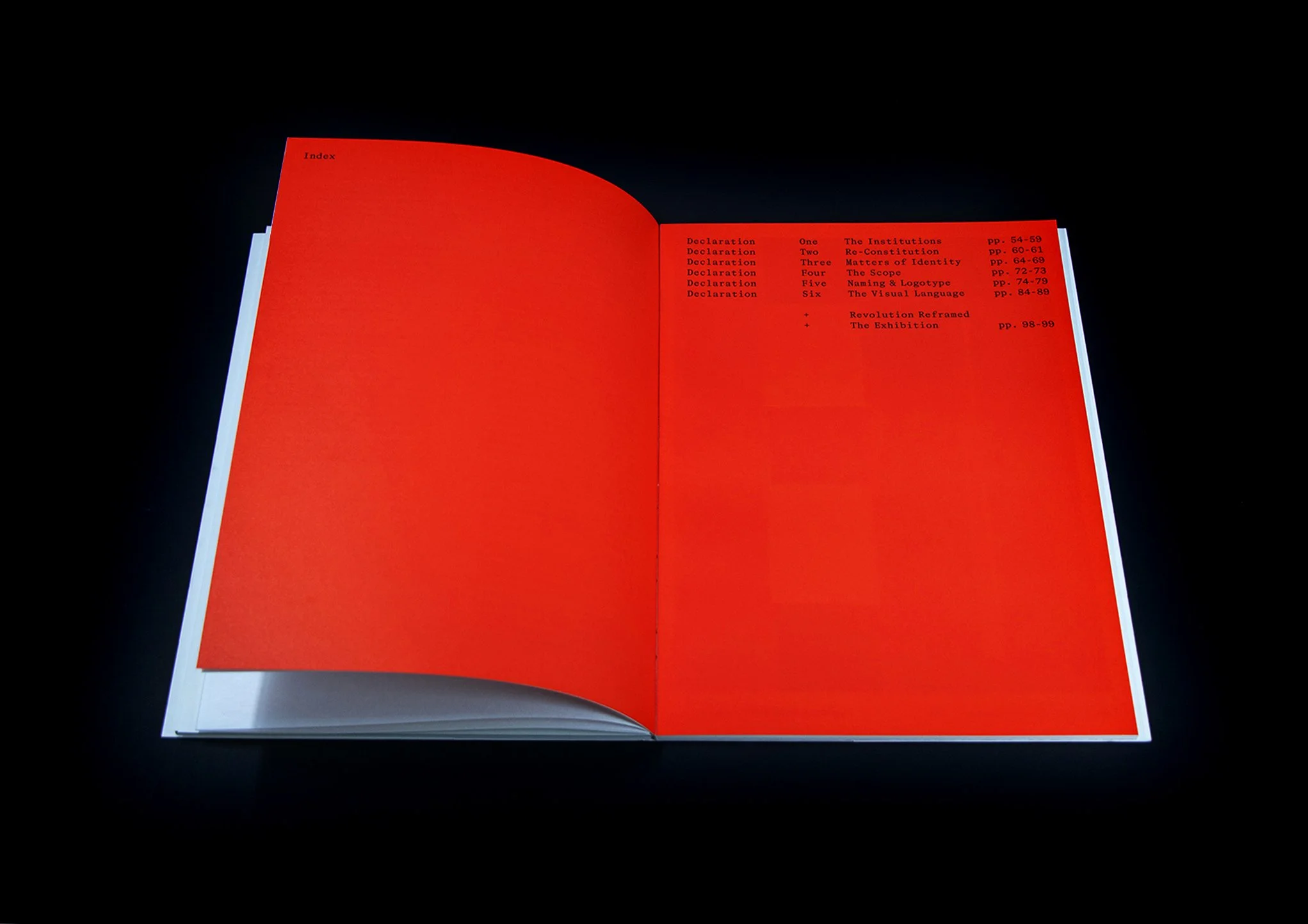

Re-Constitution ‘21: The Essay
Essay, insignia fragments, design statements and visual disquisition about national and social identity subjects. Research and study for the development of the visual identity and the exhibition design on the occasion of the bicentennial anniversary of the Greek Revolution.
Research, essay and design development:
Dimitris G. Papazoglou
(2017-2021)
Format: 225x320mm
Pages: 104 + Couverture
ISBN: 978-618-85942-0-3
First Edition: 2021
Publisher: DpS Athens Publications
Typography
EIM Νew Times
Customization: Dimitris Papazoglou
EIM New State Hellenica Grotesk
Dimitris Papazoglou
Neue Haas Unica
Toshi Omagari
Fedra Serif A
Peter Biľak - Typotheque
Translated to Greek: Panagiotis Haratzopoulos
Graphik LG
Christian Schwartz
Berton Hasebe
Ilya Ruderman
Hrvoje Živčić
Translated to Greek: Panagiotis Haratzopoulos
Bradford LL
Laurenz Brunner - Linetto
Translated to Greek: Irene Vlachou
Internal pages stock
Munken Pure Rough 120gsm
Perrakis Papers
Printing - Binding
Future Format
1st Edition / Copies
100 copies in hardcover stock
and 100 copies in paperback
with open wound spine.

in lieu of a preface
Abstract from the prologue note
The present publication is the synopsis of a research project under the same title, a considerable part of which was used in the design of the National and Historical Museum’s (NHM) 2019 – 2021 programme, on the occasion of the bicentennial anniversary of the Greek Revolution of 1821.
As a brief historical reference, this particular research project started much earlier; it begun sometime in the middle of 2017 as a personal thesis on identity issues at a national level, while working on the rebranding, and designing a new identity for the National Library of Greece. The NHM adopted this thesis two years later, almost in its entirety, in order to develop a titular visual identity, making the NHM an ideal field for practice and implementation; indeed testing at times the limits of the ideas themselves, in relation to matters concerning a rapidly evolving society in a period of research for coherent links and national identity and of the creation of relevant institutions.
To this extremely honoring but, at the same time, enormous challenge to adopt this particular research and also, to assign me the artistic direction of the NHM played a major role the historians-curators Demetra Koukiou and Ifigenia Vogiatzi, to whom I would like to extend my deepest gratitude not only for the great honour, but even more so, for their important contribution, support and continuing faith throughout this very ambitious venture, which, I would like to believe, we completed successfully, with the additional help of many exceptional collaborators. The final outcome of the design as well as the overall research and views that constitute the basis for this project are part of a wider context of concerns and questions, regarding all the issues that define the deeper and multidimensional core of identity characteristics of a Nation, in terms of contemporary visual communication.
Here I would like to stress a point. This work is not a strict, technical edition, exclusively on matters relating to the art of design; nor is it a purely historical essay; it is an attempt to a dynamic and very deliberate conversation between these two disciplines. As such, it is not only for the experts nor for the few. The entire project, through its hybrid nature, suggests a new type of confrontation with the traditional depictions of the Greek Revolution. It offers an alternative way of reading and understanding the different sides of history by utilizing the broader field of visual communication as one of practice and testing. Through this not so usual approach, the design project becomes an additional layer of historical research and, as a result, the role of the designer expands, while raising three very important issues.
Firstly, whether the practice of design can be used as much to interpret as to illustrate historical research, by investigating complex issues of identity. Secondly, whether the modern field of design should reestablish its cultural value and social role in the practice of design. And lastly, whether such a project could ultimately become a proposal about the way we approach matters of such a scale, especially those defined as “National Branding”. In a time where a rising number of countries pursue the development of a comprehensive system of visual identity for promotion and identification, the discussion that concerns the supporting methodology of such an endeavour seems timelier than ever.
Of course, in accordance with corporate practices, an essential condition for the success of such a project would be the transformation of the society from within, followed by the transformation of its supporting image. Because without this process, we may more correctly have to use the term “State” as opposed to “National”.
The book aspire to constructively deal with these issues, by firstly presenting the practice of design as an exercise of historical self-awareness and identity restructuring.

